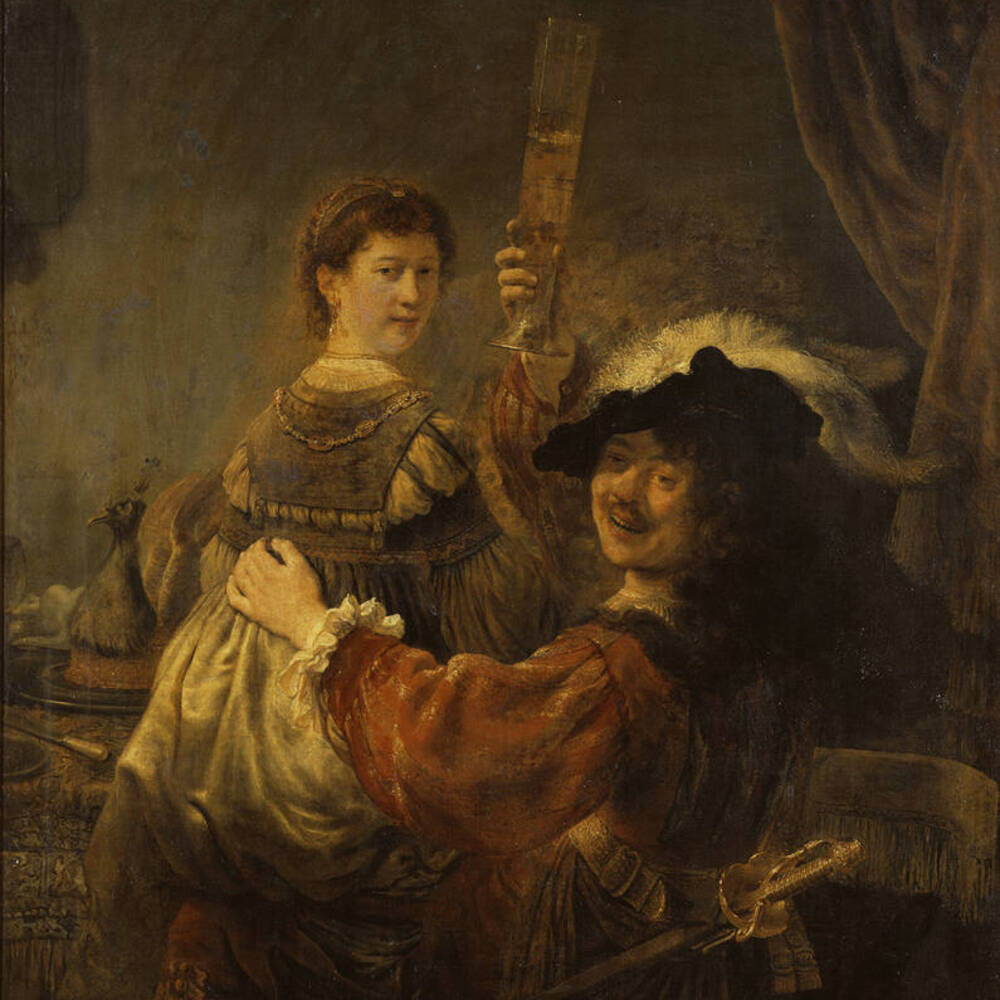This double portrait of Rembrandt and his wife Saskia shows the couple in a moment of joyful exuberance. The motif of the soldier carousing in a tavern with a girl is reminiscent of the works of the “Utrecht Caravaggists”, who influenced Rembrandt’s work. Investigations on the evolution of the painting have shown that a lute player was originally included as a third figure in the composition, whose subject was at first the biblical parable of the Prodigal Son. The content was later fundamentally altered and this figure painted over.
Further Media



In the Gospel According to Luke, Jesus tells the parable of the prodigal son:
“There was a man who had two sons. The younger one said to his father, ‘Father, give me my share of the estate’. So he divided his property between them. Not long after that, the younger son got together all he had, set off for a distant country, and there squandered his wealth in wild living.”
When he had frittered away all he had, he returned home contrite and penitent:
“But while he was still a long way off, his father saw him and was filled with compassion for him; he ran to his son, threw his arms around him and kissed him.”
Joyful over his son’s return, the father decides to organise a feast – which makes the older brother furious. But the father justifies his actions, saying:
“My son, you are always with me, and everything I have is yours. But we had to celebrate and be glad, because this brother of yours was dead and is alive again.”
- Location & Dating
- c. 1635
- Material & Technique
- Oil on canvas
- Dimenions
- 161 x 131 cm
- Museum
- Gemäldegalerie Alte Meister
- Inventory number
- Gal.-Nr. 1559